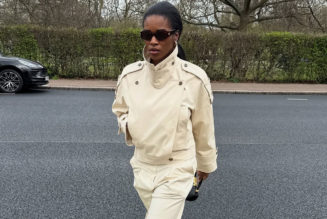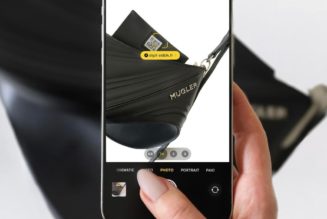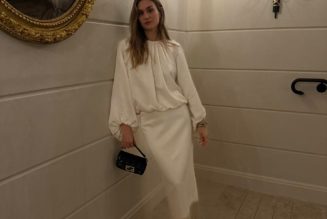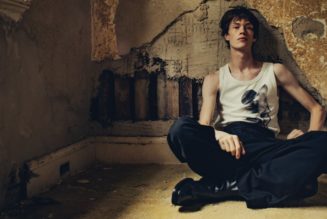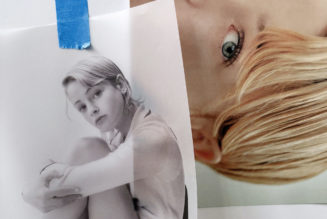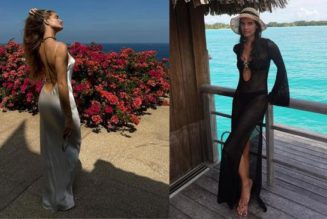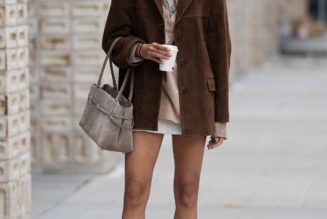But, more than a new categorisation for posh palazzo trousers, a survey of industry insiders shows that this wave of quiet luxury may have deeper implications for consumer values today and reflect a fundamental shift in how luxury may be defined in the future.
Three of the understated outfits worn by Paltrow in court typify what some are calling a “stealth wealth” wave. Photo: AP
The change, according to industry experts, was a long time coming. Logomania fatigue – after that trend dominated shop floors pre-pandemic – along with a troubled economy, gave rise to the unique concoction of quiet luxury prominent today.
“Over the course of fashion history different waves of pared down, reductive, or minimalist styles have surfaced, often following periods of loud, exuberant or maximalist fashion,” says Melissa Marra-Alvarez, curator of education and research at The Museum at the Fashion Institute of Technology (FIT), New York.
Moreover, it’s not uncommon for people to tone down conspicuous displays of wealth when times are tough: subdued luxury took hold in the United States in the 1930s, 1970s, 1990s and again in the early 2000s – all periods of economic decline, she says.
Quiet luxury is a way for people to distinguish themselves from others by saying, ‘I’m beyond logos and trends’.
“So not wanting to appear tone deaf factors in, as does wanting to get mileage from your investment pieces so they remain relevant for multiple seasons,” Marra-Alvarez adds.
Brands that have long championed a timeless approach to design and consumption enjoyed an uptick in sales during and after the Covid-19 pandemic.
A recent report published by online fashion magazine The Business of Fashion says Ermenegildo Zegna Group, which owns Zegna and Thom Browne, saw revenue rise 16 per cent last year despite a pessimistic forecast for luxury brands, thanks to strong demand for sleek tailoring.
Tibi’s distinctive yet pared down Sid jeans are one of the brand’s bestselling items. Photo: Tibi
“In our 26 years, we’ve never introduced an item that sold out so quickly,” says Amy Smilovic, founder and creative director of contemporary label Tibi, of its Sid jeans, which have a distinctive design yet are simultaneously clean and quiet.
Smilovic’s social media presence grew exponentially during the pandemic as consumers found comfort in brands like hers that offered clever and modern, yet timeless designs.
“Luxurious materials in styles that feel familiar but modern can be very grounding; it gives you comfort,” she says.
Vanissa Antonious, founder of minimalist accessories label Neous, echoes Smilovic’s sentiment, citing today’s quiet luxury approach as a counterbalance to the knee-jerk, post-pandemic display of “joyful dressing”.
“I feel that we all lost an element of ourselves in the chaos over the last few years, probably gravitating towards things we wouldn’t normally,” she says.
“There seems to be a shift and sense of resettling through reflection, gaining a greater understanding of who we are and seeking the curated and a more understated way of life.”
Quiet luxury styles that have proved successful involve elements of polished ease and are instantly recognisable despite the absence of logos. Swedish label Toteme’s bestselling item is one you’ve undoubtedly seen percolating around your social media feed.
“Our scarf jacket, we feel, has been incredibly successful because it pops on the rail. It’s specific, both in details and attitude, and unmistakably from Toteme,” co-founder Elin Kling says.
She and fellow co-founder Karl Lindman say Toteme has enjoyed a steady increase in sales, and is looking to open its next store in Nanjing, China.
A quick scan of any luxury e-tailer for the brands at the forefront of quiet luxury will reveal the usual suspects such as Bottega Veneta, The Row and Khaite – labels known for their crisp cuts as well as eye-popping price tags.
Even at the contemporary level, brands like Tibi and Neous are seeing their customers invest in products with higher price points, which suggests a subtle but growing shift in consumer values.
“I think quiet luxury is a way for people, especially fashion people and those with means to buy whatever they want, to distinguish themselves from others by saying [they are] beyond logos and trends and what [they are] wearing is very much ‘If you know, you know’,” says Irene Kim, co-owner of Toronto-based styling consultancy firm La Closette.
A model walks the runway wearing a minimalist outfit during the Bottega Veneta fashion show, as part of Milan Fashion Week, in 2023. Photo: Getty Images
“There’s exclusivity in the circles who know and can afford quiet luxury brands such as Khaite, The Row and Jil Sander.”
What the movement signals is not just a defiance of logo dressing, but a potential redefinition of luxury itself, one that, beyond an item’s nominal value, concerns itself with insider knowledge and accessibility.
Marra-Alvarez gives the example of a one-of-a-kind pair of vintage jeans, or a shawl, handwoven by artisans in the Andes, that took over a month to create using an ancient process.
A model walks the runway at the Khaite fashion show during New York Fashion Week in 2020. Photo: Getty Images
“Most people understand the prestige of a Gucci logo across your sweater, but does everyone understand the essence of luxury associated with the finest quality alpaca-wool jumper that was sustainably harvested and handwoven? Probably not,” she says.
“This creates a new type of exclusivity because you now need to understand these new codes of what makes something coveted as a luxury item.”
Indeed, there seems to be greater cachet attached to something being made from a rare raw material than ever before. As Kim and Marra-Alvarez suggest, a growing number of consumers with spending power are placing increased value on the material and provenance of items.
Fashion designer Yoyo Cao wears a Gucci sweater during Paris Fashion Week in 2016. The trend of logo-centric fashion has given way in recent years to more subtle garments. Photo: Getty Images
Sustainability also motivates the quiet luxury consumer. According to Italian luxury fashion house Loro Piana, those who buy its cashmere goods are attracted to its commitment to materials research and sustainability – the brand sometimes takes years to develop new fibres.
Like many emerging labels championing the “stealth wealth” aesthetic, Helen de Kluiver, who founded Dutch label Caes in 2019, prioritises it in her designs.
Before putting pen to paper to create a sketch, De Kluiver begins her process by doing fabric research for materials that are environmentally friendly and made to last.
“After finding the right fabric I design the shape that will bring out the material’s best qualities, so in a way I am designing backwards now,” she says.
“My customer is very knowledgeable on fabric qualities and cares about the right certifications to be able to feel good about their choices, which is why I put a lot of time and effort into this part of the design process.”
With the recent report by the Intergovernmental Panel on Climate Change (IPCC) warning that the planet is likely to cross a critical threshold of global warming within the next decade, choosing quiet and sustainable luxury makes sense.
In an interview with The New York Times, the costume designers behind upcoming Apple TV+ dystopian show Extrapolations envision fashion in a climate-changed future. Their guess? Clothes made from 100 per cent cotton will be as valuable as diamonds.

